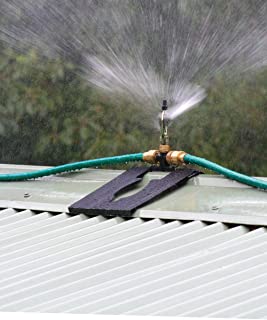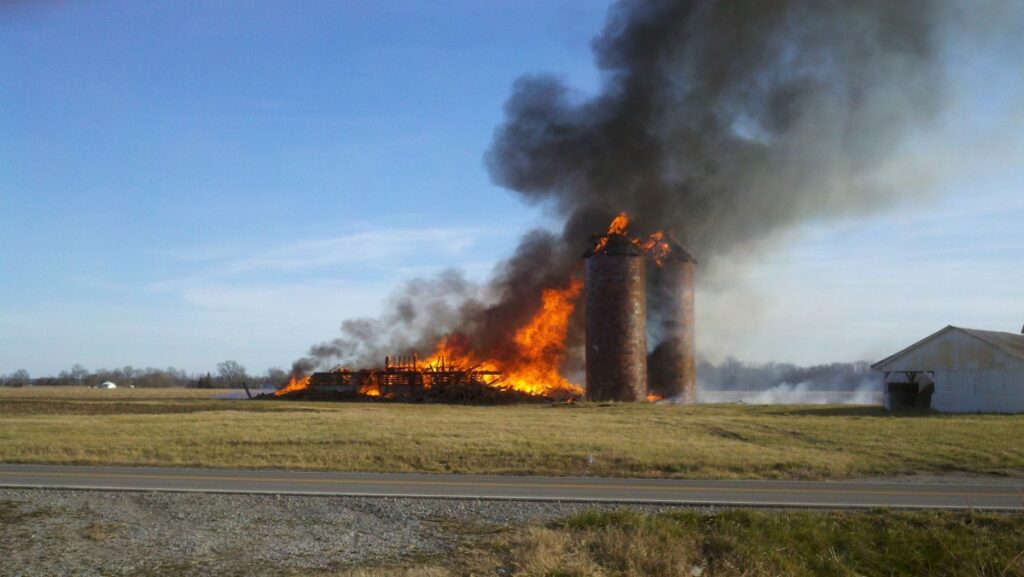“Where we live, there’s no point calling the fire department. By the time they get here, it’s a lost cause anyway”.

So goes a commonly expressed sentiment in rural areas. It’s not an unreasonable opinion: fires tend to grow, and the longer the travel time, the more advanced the fire will likely be by the time the crews arrive.
Nor is it just the distance: just getting there is a challenge at times, and a limited water supply can greatly impede fire suppression efforts once on scene.
It does not have to be this way, of course. There are plenty of ways for homeowners and their communities to do things differently, so that when a fire does occur there will be a much better outcome, no matter how far away the fire hall is. As such, this post is written with the property owner and the general public in mind, as much as building and fire officials. Public safety is a cooperative effort, after all!
Let’s look at some common misconceptions (“myths” we’ll call them) that get in the way of effective fire protection in rural areas.
Myth #1: Fire department response time is just a matter of distance from the fire hall
Reality: Distance from the fire hall is just one part of the equation. Other important factors include:
- Detection: How long has the fire burned before someone notices? Very often, a fire is first noticed by a neighbor or passersby, when the fire is already too far advanced for the building to be saved. Reliably monitored alarm systems can drastically reduce this time. (On the other hand, unreliable systems can cause expensive false alarms. Choose carefully!)
- Alerting: The time between detection of a fire and someone placing the 911 call can vary astonishingly. Many factors can cause a delay at this stage, including – surprisingly – lack of awareness of how to call 911. Again, alarm systems are beneficial. Ensuring that everyone in the family knows the basics of calling for help is equally important. Dust off that family escape plan!
- Information provided by the caller to the 911 dispatcher can make all the difference. An accurate description of what’s happening, the exact location and good driving directions will help emergency responders arrive as quickly as possible and will also ensure that they bring the most useful choice of equipment and personnel. Confusing or vague information will add precious minutes to the time it takes responders to arrive. In the worst cases, responders have been sent in entirely the wrong direction, or arrived to find an entirely different type of incident than they thought they were responding to. “How to call 911” is a highly effective public education topic!
Myth #2: If I live in a remote location, there is no point in calling for help if I have a fire
Reality: No matter where you live, there is a lot you can do to increase the chance of the fire department having something valuable to save when it finally arrives.
(A location is considered “remote”, according to NFPA 1720, if response time is greater than 14 minutes. That makes a large number of populated areas in Canada very remote indeed!)
- Building maintenance: When heating and electrical systems and appliances are in good condition, fires are less likely to start. When stored combustible materials are kept to a minimum, fires have less to burn and spread more slowly. When alarms are in working order, fires are detected soon after they start.
- Better habits: Simple measures such as keeping interior doors closed can substantially reduce the spread of smoke and heat if a fire occurs. Not only does this often reduce the amount of damage to the building and its contents, this greatly increases your chance of survival. Keeping windows shut also helps slow the spread of a fire. Minimize the clutter, so that a fire has less to consume, and firefighters have less to trip over.
- Fires that start when you aren’t there are often the most destructive, because, obviously, you aren’t able to quickly suppress them before they grow and become uncontrollable. Too many homes are lost because a fire started when the people were sleeping or were outside or away from home. It’s often the simplest things: a pot forgotten on the stove, a candle left burning, a wood stove left smouldering, portable electric heaters left unattended, 9-volt batteries loose in a drawer. Unplug that toaster when not in use! There are many other effective fire safety tips available from the National Fire Protection Association. They work – please use them!
There are many other effective fire safety tips available from the National Fire Protection Association. They work – please use them!
- Exterior maintenance. Simple measures that reduce the risk from wildfires include: Keep gutters and decks free of leaves, trim back vegetation around the house, and thin out nearby stands of trees. Keeping the yard and driveway uncluttered makes it easier for emergency crews to enter the yard and begin work. You can’t do much about fires that start elsewhere and burn onto your property, but you can make your property more fire-resistant. The FireSmart program provides in-depth practical instructions for creating fire-resistant yards, and its effectiveness has been proven time and again.
- Quick suppression of small fires. Never enter a burning building or expose yourself to smoke. However, simple measures such as portable extinguishers, garden hoses and rooftop sprinklers can be used to keep fires that are just beginning from getting out of control.
- Building or renovating? There is a lot you can do to increase fire resistance, both indoors and out. Just by ensuring that your building and all of its components and systems meet current codes and standards, and are installed with good workmanship, goes a long way toward preventing fires. Consider installing a 13D sprinkler system. Choose fire-resistant cladding and finishing materials. Your local building official is a source of valuable information on these, and more.
Consider installing a 13D sprinkler system. Choose fire-resistant cladding and finishing materials.
[convertkit form=1987179]
Myth #3: If I live in the country, I’m on my own when it comes to fire protection

Reality: Your community can do a lot to enhance fire protection for all of its residents.
Some examples include:
- Road signs and coordinated property address signs make it easier for all emergency responders (police, ambulance, fire) to find their way to your home without delay.
- Good road maintenance, including the driveway into your property, is vital. Firefighters and paramedics can’t help you if they can’t get to you.
- The FireSmart program, if implemented and maintained community-wide, can greatly reduce the risk from wildfire for everyone.
- Reliable water sources can be developed at remote locations to give firefighters what they need most: water in sufficient quantity to control the fire. Portable pumps are a great investment for rural residents, if a natural water source is nearby. (More on water supplies in a future post!)
- Good neighbors are quick to come to each others’ aid, and can provide the most valuable assistance of all. Don’t know your neighbors? Better fix that!
- Community-minded businesses can make it possible for employees to be volunteer firefighters, by freeing them to respond without penalty.
- Local governments can be a powerful force for fire prevention and public safety:
- Building Code enforcement ensures that new buildings are constructed in compliance with current standards, which are designed to minimize the risk of fire and maximize occupant safety.
- Fire Code inspections and fire safety education help property owners learn how to minimize risk.
- Fire departments need some key support in order to be effective, and these include people, training, equipment and supplies (especially large volumes of water). Well-trained leadership, effective plans and procedures and reliable communications are vital. Fire departments need their communities to understand what it is they do – which is another great topic for public education. Those fire departments are a valuable pool of expertise to draw on, for all of the measures listed above.
Fires will still happen, despite our best efforts. However, with the combined efforts of residents, their communities, and the fire departments and local governments that serve them, many devastating losses can be prevented, even in the most remote of areas.
What are some best practices you’ve seen in remote and rural communities? We would like to hear from you.
Want to Dive Deeper?
NFPA 1720: Standard for the Organization and Deployment of Fire Suppression Operations, Emergency Medical Operations, and Special Operations to the Public by Volunteer Fire Departments
NFPA 1142: Standard on Water Supplies for Suburban and Rural Fire Fighting
NFPA 13D: Standard for the Installation of Sprinkler Systems in One- and Two-Family Dwellings and Manufactured Homes
Underwriters Laboratory has a series of excellent videos demonstrating fire behaviour in buildings, and research driving new technology.
A shout out to the Township of Perth East for their excellent rural fire prevention program.

